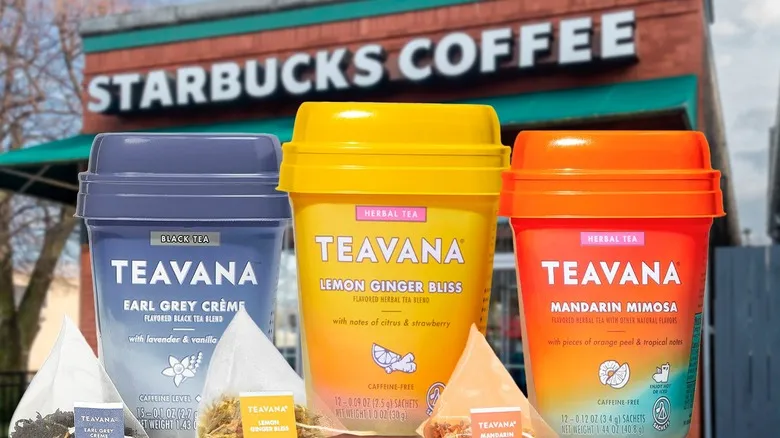Teavana began in the late '90s
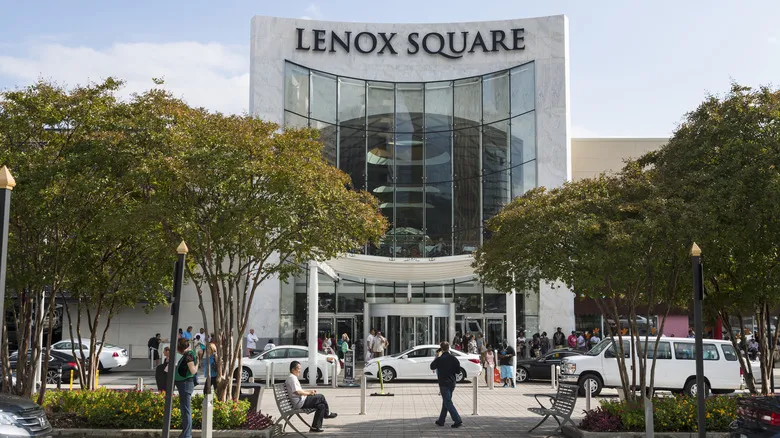
Teavana's origins were quintessentially start-up, eventually leading to its acquisition by Starbucks. Established in Atlanta in the late 1990s with the life savings of Andrew and Nancy Mack, the tea company embodied the couple's passion for tea culture and their aspiration to share it with others.
The Macks had ample reason for optimism. As reported by Atlanta Magazine, the city experienced a population surge of 43% during the '90s, with 360 new residents arriving daily. Equally significant was the plentiful mall space and vibrant mall culture in Atlanta, featuring popular locations like Lenox Square, Mall of Georgia, and Town Center at Cobb. Teavana's first store opened in Phipps Plaza at Lenox Square.
Given the popularity of malls in the 1990s, the Macks were confident that their vision would attract customers. For a time, shoppers flocked to their establishment, which aimed to be "part tea bar, part tea emporium." By the mid-2000s, the Macks had expanded to 50 tea shops, and in 2011, Teavana—originally named "Elephant Tea Co."—went public, generating $121 million from its IPO, according to Tea Biz. When the Macks sold the company to Starbucks, Teavana had grown to over 300 locations. The sale brought the Macks $335 million, and Andrew Mack continued with Starbucks until his retirement in 2014.
Buying the tea chain cost Starbucks over $600 million dollars

Starbucks envisioned a transformative future for the tea industry, with Teavana serving as the gateway. As reported by Reuters, this ambition was supported by the $620 million acquisition of the specialty tea brand in 2012. That same year, Starbucks also acquired Evolution Fresh and La Boulange Bakery, leading to the characterization of the Teavana purchase as one of the company's "smartest acquisitions," reflecting the optimism of Starbucks' leadership regarding the investment. The deal cost Starbucks $15.50 per Teavana share, which represented a 50% premium, according to Hartford Business Journal.
Starbucks planned to leverage the launch of a stand-alone Tazo store in Seattle as a potential business model for the Teavana brand. The coffee retailer was confident that the tea segment of its business would pave the way for new opportunities. At the time of the Teavana acquisition, Starbucks reported $1.4 billion in sales from the Tazo brand. Having successfully expanded its original 11 stores into thousands of retail locations, the company believed it could grow Teavana from over 300 stores to 500 within three years of the acquisition. However, Starbucks' ambitions extended further; according to Financier Worldwide, the company also aimed to introduce packaged Teavana products in supermarkets and grocery stores.
Starbucks overestimated the size and scope of the tea market
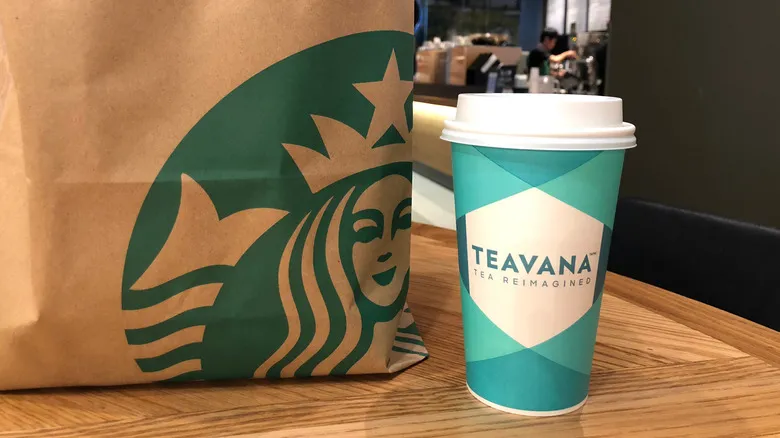
When Starbucks acquired Teavana, the company anticipated that the global tea market would generate approximately $90 billion in sales, and the coffee giant aimed to capture a share of that market, as reported by CNBC in 2014. By the time the CNBC report was released, Starbucks had been involved with Teavana for nearly two years. Initially, the merger appeared promising for both companies.
However, there was a significant discrepancy in the projected figures for the global tea market—a $50 billion gap. According to Statistica, in 2012, the herbal tea segment represented only about $40 billion of the overall tea market. Furthermore, in 2012, Americans were increasingly drawn to ready-to-drink and canned teas, which accounted for over 19% of the market share, as noted by BevIndustry.com.
Most of these beverages were sold through convenience stores, grocery stores, and similar retailers, which were not the type of tea bar locations Starbucks envisioned when it acquired the mall-based chain. In contrast, the demand for loose teas during that period was relatively low, posing a challenge for Teavana, a brand built on selling loose teas to mall shoppers. Additionally, since Starbucks was primarily seen as a destination business, attracting customers to quick-visit stores like Teavana proved to be difficult.
The coffee giant intended to create tea bars
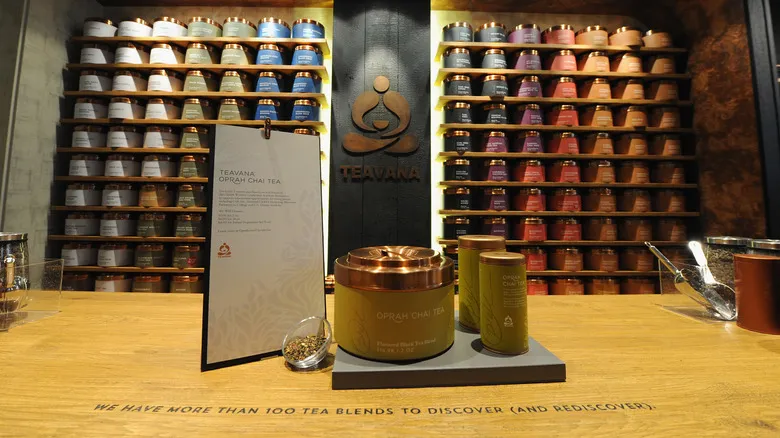
In the 1980s, Starbucks operated just 11 stores, and its sales were limited to whole beans—there was no brewed coffee in sight. This changed in 1987 when the company launched its first espresso bar. Fast forward to 2012, when the mermaid-branded company acquired Teavana, aiming to replicate the successful business model that transformed simple coffee beans into thriving coffee shops.
Before being acquired by Starbucks, Teavana was known for its impressive wall of tea but lacked the inviting atmosphere to encourage customers to linger. Originally named Starbucks Coffee Tea & Spices, the company sought to fill the gap in the market for tea bars by creating its own venues that offered specialty tea beverages to a wider audience.
In October 2013, Starbucks achieved this vision by opening the first Teavana Fine Teas + Tea Bar on Manhattan's Upper East Side. This innovative concept was essentially the "Starbucks of tea," complete with Teavana-themed merchandise, tea-inspired snacks, and tea lattes. For tea enthusiasts, the ambiance of the tea bar fostered a passion for the ritual of tea drinking, and many patrons shared their fond experiences on Yelp, celebrating the bar while it was operational.
Teaologists introduced customers to the 'Heaven of Teas'
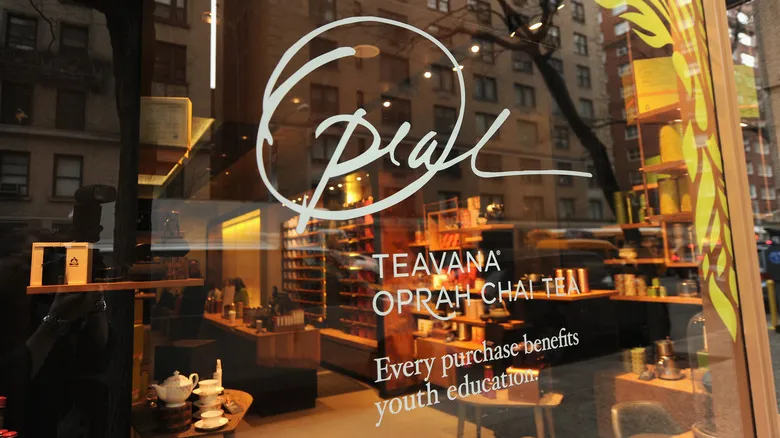
Starbucks employs baristas, while Teavana featured teaologists, sparking hopes for a harmonious blend of the two. The teaologists served as on-site educators and exceptional tea enthusiasts, sharing their passion for premium tea and its accompanying rituals with customers visiting Teavana locations worldwide.
The goal was for customers to discover the beverage's rich history and, through this educational experience, feel inspired to purchase one of the loose leaf teas offered by the company. The role of a teaologist was so vital that when Teavana collaborated with Oprah Winfrey to create a signature drink, the Teavana Oprah Chai, for the Oprah Winfrey Leadership Academy Foundation, the media mogul worked closely with the lead teaologist to craft the creamy drink infused with cinnamon and ginger.
Naoko Tsunoda, a teaologist, was responsible for overseeing tea development at the company—a challenging endeavor. Tea is cultivated in over 40 countries, and factors such as climate, soil quality, grower expertise, and even weather conditions significantly influence tea production. With the history of tea tracing back approximately 4,000 years to ancient China and Japan, Tsunoda and her fellow teaologists certainly had their work cut out for them.
The coffee company intended to tap into the wellness market
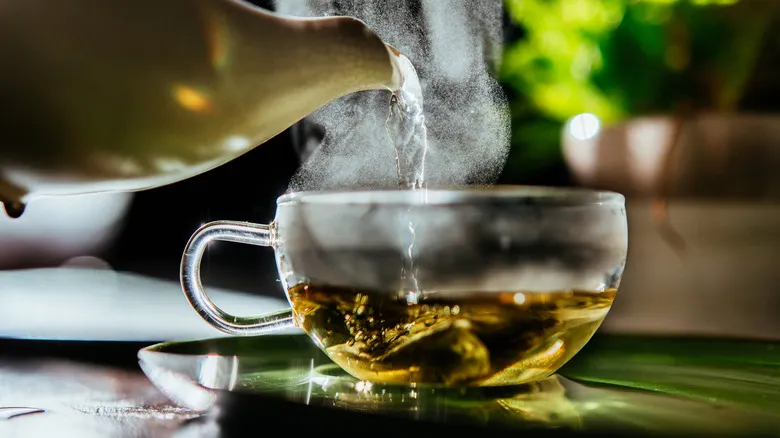
In 2012, the same year Starbucks acquired Teavana, wellness trends suggested that health access would increasingly transition into retail environments. While much of this focus was on retailers like Walgreens and Safeway, wellness trends also permeated other retail sectors, with Starbucks playing a significant role.
The Seattle-based coffee chain had already expanded its offerings with smoothies, green coffee refreshers, and cold-pressed juices in 2009, 2012, and 2014, respectively. The acquisition of Evolution Fresh, a wellness juice brand, further strengthened Starbucks' position in the health market. Additionally, Teavana's range of teas featured health-oriented options with names like "Defense," "Rejuvenate," "Rev Up," and "Purity." These beverages undoubtedly contributed to the calming atmosphere and inspirational quotes found in Teavana locations, reinforcing Starbucks' assertion that its drink selections would "enable customers to tailor beverages to align with their wellness objectives."
However, Starbucks eventually sold Evolution Fresh to Bolthouse Farms and shifted Teavana's business strategy. This change was necessary to adapt to a restaurant and beverage landscape that was increasingly favoring innovative lunch options over traditional sit-down tea bars, even those focused on wellness.
Teavana faced some stiff competition in the tea market

Ironically, when Starbucks acquired Teavana in 2012, it inadvertently became a competitor in the tea market. The company had already bought Tazo Tea in 1999, which meant that the coffee giant was now the owner of two rival tea brands. However, Tazo wasn't the only competitor that the Starbucks/Teavana brand faced. Between 2012 and 2018, other brands like Stash Tea, Argo Tea, DavidsTea, Talbott's Tea, and Mahalo Tea were also active in the market. These years marked the period when Starbucks took over Teavana and subsequently shut down all of its physical stores.
Moreover, several of these brands—Mahalo, DavidsTea, Argo, and to a lesser extent, Stash—shared business characteristics with Teavana. Commonalities included the sale of loose leaf teas in specialty tea shops and partnerships to market packaged products in grocery stores and other distribution channels, such as Amazon and QVC.
It's also important to note that both coffee and iced tea rank among the top five beverages sold in restaurants, according to Nation's Restaurant News. In essence, the Starbucks/Teavana brand entered a market already saturated with competitors employing similar business strategies. Although Starbucks sold Tazo Tea to Unilever in 2017, the lack of distinguishing features for Teavana made it challenging for the new tea brand to stand out in a crowded marketplace.
Being sold in shopping malls didn't help the tea company's prospects

Once hailed as a brilliant concept, the Teavana business model encountered challenges that many retailers began to face in the late 1990s and early 2000s: competition from online sellers and the repercussions of store-closing hurricanes. Once a popular destination for morning joggers and teens shopping during their free time, by 2017, mall-based retail bankruptcies had become a frequent occurrence.
Shoppers who once frequented the mall out of boredom shifted to online shopping on platforms like Amazon and Etsy. They also began to favor specialty retail stores that offered unique items, often discovered through online influencers celebrating the uniqueness of those products. Additionally, individuals who used to dine at mall restaurants several times a week started to spend more time cooking at home. With over 350 mall locations and a business model that didn’t always promote a social atmosphere for customers to relax and enjoy tea with friends, Teavana found itself in an unfavorable position.
It’s also important to note that Starbucks' other tea acquisition, Tazo Tea, was also put up for sale in 2017. The Seattle-based coffee giant aimed to refocus on its coffee sales. Tazo Tea served as a warning sign for the tea market. The announcement of Teavana's closure of all its stores coincided with this period as well.
More than 300 stores closed in the end

The 500 Teavana locations that Starbucks executives envisioned never came to fruition. In just five years, the brand transitioned from mall-based stores offering loose leaf specialty teas (along with a few sit-down tea bars) to selling packaged products through online retailers. Additionally, it established a partnership with Anheuser Busch for bottled beverages, which enabled the tea company to enter the ready-to-drink market by early 2017. Customers seeking more traditional tea options had to search for boxed Teavana teas on platforms like Amazon and Walmart.
This new direction for Teavana teas came at the cost of over 300 stores that Starbucks acquired in the original 2012 deal. Ultimately, all of these brick-and-mortar locations closed, most of which were situated in shopping malls across the U.S., Canada, Mexico, and the Middle East. Some of the 3,000 employees from Teavana stores were able to find jobs at nearby Starbucks coffee shops. It marked a rather underwhelming conclusion to a brand that aimed to deliver the ideal cup of tea for loose leaf enthusiasts. Instead, Teavana's specialty teas became part of a category that fell somewhere between wine coolers and sodas, lacking the allure of truly exotic brews like Earl Grey.
There were numerous legal battles that dragged things down
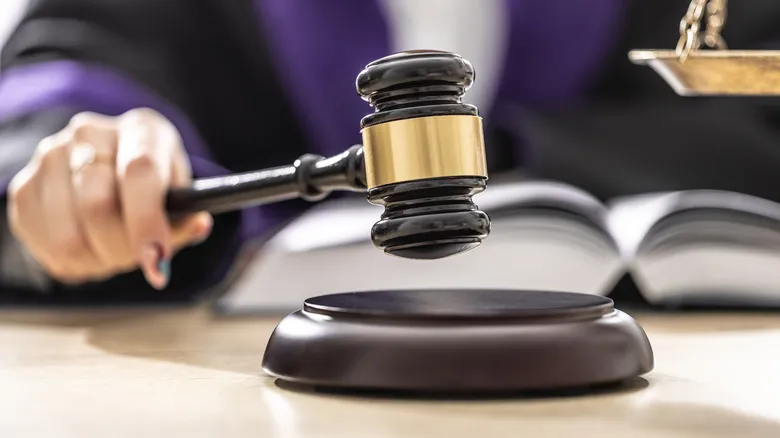
When attempting to shut down an unprofitable segment of a business, various challenges can arise, such as being tied to lease agreements. This was a significant issue for Starbucks when the company announced the closure of 379 Teavana locations in late 2017. It turned out that over 70 of these mall locations were managed by Simon Property Group (SPG), which was understandably keen on collecting the rent stipulated in the lease agreements.
To counter Starbucks' plans to close the Teavana stores, SPG initiated a lawsuit against the coffee giant. A judge in Indiana sided with the property management firm— the largest commercial property company in the nation— compelling Starbucks to keep more than 70 locations operational. The court order required Starbucks to adhere to the SPG leases, which was a considerable obligation, especially since some of these leases extended until 2027.
However, in 2018, it was reported that the two companies had reached a settlement regarding the leases. While few details of the agreement were disclosed, shortly after the settlement, the Teavana stores impacted by the lease agreements began to close within days. This situation underscored the vulnerabilities that brick-and-mortar businesses face in the digital age.
Stand-alone Teavana tea bars morphed into Starbucks locations

In what could be seen as a remarkable transformation, Starbucks successfully converted tea into coffee over a span of just a few years. In January 2016, the company revealed that its concept tea bars in New York and Beverly Hills would transition from Teavana tea bars to Starbucks coffee shops. The only Teavana location to remain operational was the one in University Village near the University of Washington. This shift was attributed to an evolving business strategy that aimed to integrate Teavana products into existing Starbucks coffee shops rather than maintaining separate tea-branded stores.
That year, Teavana tea sales within Starbucks-branded locations generated a staggering billion dollars in revenue. It appeared that retaining the Teavana brand while eliminating the tea bars was a sensible and lucrative solution in light of the changing business landscape. The tea bars weren't the only victims of the coffee chain's challenges during this period; the bakery chain La Boulange, also owned by Starbucks, was closed down despite initial plans to feature its products in Starbucks locations. As for Teavana, Starbucks continues to offer a limited selection of pre-packaged items for in-store purchase and home use. However, market speculation indicates that even these offerings may soon be discontinued.
Recommended
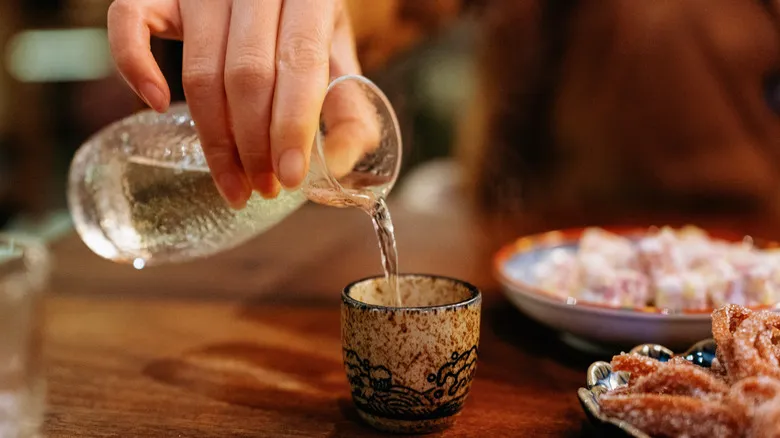
What To Know Before Ordering Sake In Japan
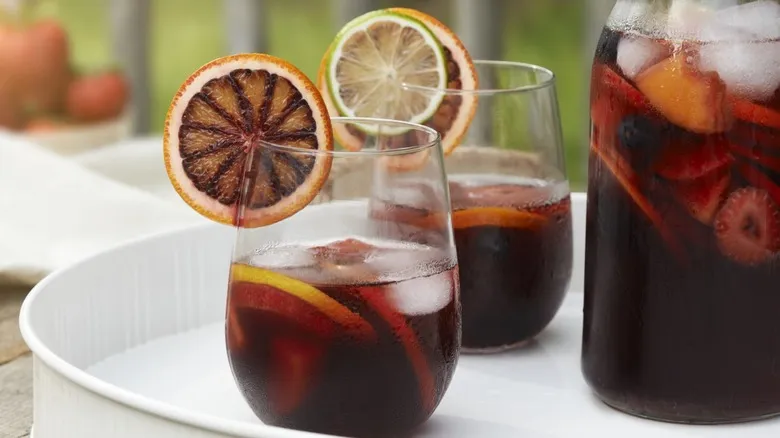
Sangria Vs Mulled Wine: Is There A Difference?

The Stinger: The Glitzy Cocktail That Was Practically Forgotten After Prohibition
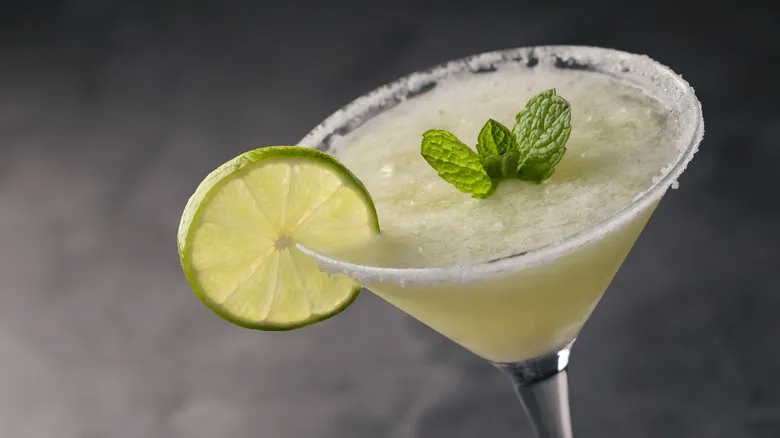
Frozen Cocktails Can Be Traced All The Way Back To Prohibition
Next up

